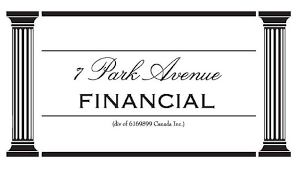|
Asset Based Lending: Beyond Traditional Credit
Asset Based Credit Lines: Smart Business Funding
YOU ARE LOOKING FOR AN ASSET-BASED LINE OF CREDIT
Revolutionizing Business Credit: The Asset-Based Credit Line Approach
ARE YOU UNAWARE OR DISSATISFIED WITH YOUR CURRENT BUSINESS FINANCING OPTIONS?
UPDATED 07/26/2025
CONTACT US
CALL NOW - DIRECT LINE - 416 319 5769 - Let's talk or arrange a meeting to discuss your needs
Email = sprokop@7parkavenuefinancial.com

The Asset Based Line of Credit: A Business Credit Solution in Canada
Introduction to Asset-Based Financing
Breaking Free from Traditional Financing Roadblocks
Your business has valuable assets, but traditional lenders keep saying no.
You're watching opportunities slip away while banks scrutinize every detail of your credit history for their unsecured loans. Meanwhile, your inventory sits idle, your receivables grow, and your equipment depreciates.
Let the 7 Park Avenue Financial team show you how an asset-based line of credit transforms these underutilized assets into immediate working capital, giving you the financial flexibility you've been seeking.
Have you ever considered how unlocking the value of your company's assets with an Asset-Based Line of Credit could be the key to overcoming your business's financial constraints and propelling it toward new heights of success in Canada.
Leveraging Your Assets for Growth: Insights into Asset-Based Credit
Some might argue that traditional bank loans remain the gold standard in business financing, but I contend that the Asset-Based Line of Credit is rapidly outshining conventional methods in Canada.
It offers a more adaptable and growth-oriented solution that traditional banks have long failed to provide to dynamic and evolving businesses.
Business credit and cash flow solution challenges abound in Canada. That challenge requires that you "get on board"; the alternative is, of course, falling off the track—business failure. One commonly used and relatively newer form of company financing is the asset-based line of credit.
We think you need to know about it, so let's dig in. In Canadian business finance, the asset-based line of credit emerges as a game changer, offering a robust and flexible solution to the perennial challenges of business credit and cash flow management.
Navigating through the complexities of business finance can be daunting, yet understanding the pivotal role of asset-based lines of credit is crucial for businesses seeking to thrive in a competitive market.
Asset-based lending, a relatively new yet increasingly popular form of financing, is an essential tool for Canadian businesses aiming to secure their financial footing and accelerate growth.
Understanding Asset-Based Lines of Credit
Let's review exactly what this type of business financing is, why it is different from what you may have come to expect, and what the benefits are for your business when you consider this type of financing.
The Essence of Asset-Based Financing: "Assets"
We can even sum it up in one word. That word is "assets"—if you have them, you qualify; if you don't have them, well, let's not go there.
Clarifying Misconceptions
Just to clear the air, an asset-based line of credit is not a "loan" per se. That's where we spend a lot of time talking to clients about what this type of financing is—because they view it as borrowing or adding debt to the balance sheet. Bottom line: this isn't a loan per se.
The Real Nature of Asset-Based Credit Lines
In reality, the asset-based financing we are talking about is simply a revolving line of credit that is tied very specifically to the value of your assets. The most common asset categories under this line of credit are inventory and receivables. The other assets that can be thrown into the mix are unencumbered equipment for fixed asset facility limits, tax credits, real estate, etc.
Advantages over Traditional Loans - Asset based lending works!
At the risk of overrepeating, we are not talking about loans; we are talking mainly about borrowing daily, as you need it, and using these assets as collateral.
At 7 Park Avenue Financial, we have seen clients' countless examples of how this type of Canadian business financing has increased a company's borrowing ability by 100–200 percent or more.
How can that possibly be, asks the client.
It is simply because the borrowing you are used to, if you have been able to achieve it, is based on ratios and covenants and credit limits in traditional operating facility advances, and your ability to achieve forecasts for institutions such as chartered banks via a loan transaction.
When you aren't able to achieve what we will call traditional cash flow financing in Canada via a business line of credit, the asset-based facility is a solid solution.
The Process of Approval
Clients invariably ask, "How do we get approved—do we qualify?" We have already talked about your qualifications and the ability to answer this question. Got assets? You're approved!
Explaining the Details
That's a simplistic answer, so let's explain in more detail.
Typically in Canada, these types of financings work best for facilities in the $250,000+ range. There is no real maximum on the amount you can monetize or borrow.
Facilities smaller than that tend to be receivable-based financings only. In general, the asset-based lender prefers a higher ratio of receivables to inventory, but that is not always the case, depending on your industry and your asset categories.
Comparing Costs and Flexibility
Most Canadian business owners and financial managers know the general cost of bank financing and bank interest rates.
Asset-based financing is more expensive but offers you unlimited liquidity and a higher maximum loan amount, without the shackles of ratios, covenants, outside collateral, and emphasis on personal guarantees.
Asset-Based Financing for Various Business Situations
By the way, many of the largest corporations in Canada use this type of financing, but it also covers what we call "story credits."
These are cases where your firm is in a turnaround, perhaps it has new contracts, perhaps you are coming off a less-than-satisfactory year, etc. There is a multitude of reasons for choosing this type of financing.
Case Study
The Manufacturing Turnaround
Parts Manufacturer faced a critical challenge when their largest customer extended payment terms from 30 to 90 days, creating a $200,000 cash flow gap. Traditional banks declined their loan application due to recent credit issues.
7 Park Avenue Financial evaluated their $300,000 in accounts receivable and $150,000 in raw material inventory, approving a $350,000 asset based line of credit within 14 days .
The company drew $200,000 immediately to meet payroll and supplier payments.
Within six months, improved cash flow management allowed company to accept larger orders, negotiate better supplier terms, and rebuild their credit profile. The revolving credit facility adapted to their seasonal cycles, providing maximum borrowing during peak production and lower costs during slower periods.
Result: 40% revenue increase, restored supplier relationships, and financial stability that enabled strategic growth planning.
Key Takeaways
Asset Utilization: This concept is at the heart of asset-based lines of credit. It involves leveraging a company's existing assets, such as inventory and accounts receivable, to secure credit. This approach differs from traditional loans, which often depend more on credit ratings and financial history.
Asset-based lines of credit offer more flexibility than conventional loans. Businesses can draw funds as needed, up to a limit based on their asset values. This flexibility makes it a suitable option for managing fluctuating cash flow demands.
Borrowing Capacity: The credit limit in this financing model is directly linked to the value of the business's assets. As asset values increase, so does the potential borrowing capacity, offering a scalable funding solution in line with business growth.
Risk Management: Lenders view asset-based lines of credit as lower risk because they are secured by tangible assets. This aspect often results in more favorable lending terms compared to unsecured financing options.
Business Growth Support: This financing solution is particularly beneficial for businesses in growth phases or those experiencing cash flow challenges. It provides a vital cash infusion without the stringent covenants and restrictions typically imposed by traditional bank loans.
Conclusion: Addressing Cash Flow Challenges with Asset-Based Financing
The Asset-Based Line of Credit revolutionizes business financing in Canada, offering a lifeline of liquidity to companies ready to harness their assets for unprecedented growth.
Cash flow finance is your challenge and you think the asset-based line of credit is your solution?
Call 7 Park Avenue Financial—a trusted, credible, and experienced Canadian business financing advisor who can demonstrate to you the benefits of this innovative form of a new breed of cash flow finance for your ongoing growth needs.
FAQ
What exactly is an Asset-Based Line of Credit? ABL solutions are a business financing form of finance where credit is given based on the value of a company's assets, like receivables, inventory, and fixed assets as the pledged asset/assets for greater credit availability.
How does ABL differ from traditional loans? Unlike standard loans, asset-based credit focuses on the value of your assets, allowing the company to borrow money based on sales and assets, not just credit history, offering more flexibility.
Are there any size limits to the credit available? The credit limit is typically tied to your asset values such as accounts receivables and inventory, so as your sales revenues and assets grow, so does your potential credit line as the loan-to-value ratio increases on the borrowing base—providing more working capital to the business.
Is it suitable for all types of businesses? It's especially beneficial for growing companies or those with significant assets but needing cash flow solutions.
What are the main benefits of this financing type? Increased borrowing capacity, flexibility in managing cash flow, and lesser reliance on traditional credit metrics.
Can startups access asset-based lines of credit? Yes, if they have considerable assets, even startups can secure asset-based financing.
Does asset-based financing require personal guarantees? This depends on the lender, but generally, less emphasis is placed on personal guarantees compared to traditional loans. Substantial assets are the key to asset-based finance.
Are tax credits considered an asset for this credit line? In some cases, but not always, asset-based lenders can consider tax credits to be included as part of the asset pool for securing credit.
Can this credit line adjust as my business grows? As your sales and current assets and physical assets grow, so does your credit line, making it a scalable financing option for receivables and inventory financing needs. Commercial real estate can also be included in the facility or financed separately.
How quickly can a business access funds once approved? Access to funds is usually quicker than traditional loans, often within a few days of approval.
What risks should businesses consider with asset-based lending? The main risk of asset-based loans is overleveraging assets. Businesses should ensure they can manage their debt without overextending.
How does asset-based lending impact a company's balance sheet? An asset-based loan can improve the balance sheet by converting assets into liquid capital, enhancing the company's financial position.
Can asset-based lines of credit be combined with other financing? Yes, they can be part of a broader financing strategy, often complementing other types of loans and cash flow lending credit facilities.
CITATIONS:
- Canadian Bankers Association. "Alternative Lending in Canada: Market Analysis 2024." Toronto: CBA Publications, 2024. https://www.cba.ca
- Statistics Canada. "Small Business Financing Survey: Access to Credit." Ottawa: Government of Canada, 2024. https://www.statcan.gc.ca
- Bank of Canada. "Business Credit Conditions Survey: Q4 2024." Ottawa: BoC Research, 2024. https://www.bankofcanada.ca
- Industry Canada. "Asset Based Lending: Regulatory Framework." Ottawa: Innovation, Science and Economic Development Canada, 2024. https://www.ic.gc.ca
- Financial Consumer Agency of Canada. "Business Lending Guidelines." Ottawa: FCAC, 2024. https://www.canada.ca/en/financial-consumer-agency
- 7 Park Avenue Financial ." Asset Based Line of Credit: Complete Guide for Canadian Business Owners" . https://www.7parkavenuefinancial.com/asset-based-lines-of-credit-debt-financing.htmldesktop=true

' Canadian Business Financing With The Intelligent Use Of Experience '
STAN PROKOP
7 Park Avenue Financial/Copyright/2025

ABOUT THE AUTHOR: Stan Prokop is the founder of 7 Park Avenue Financial and a recognized expert on Canadian Business Financing. Since 2004 Stan has helped hundreds of small, medium and large organizations achieve the financing they need to survive and grow. He has decades of credit and lending experience working for firms such as Hewlett Packard / Cable & Wireless / Ashland Oil
|